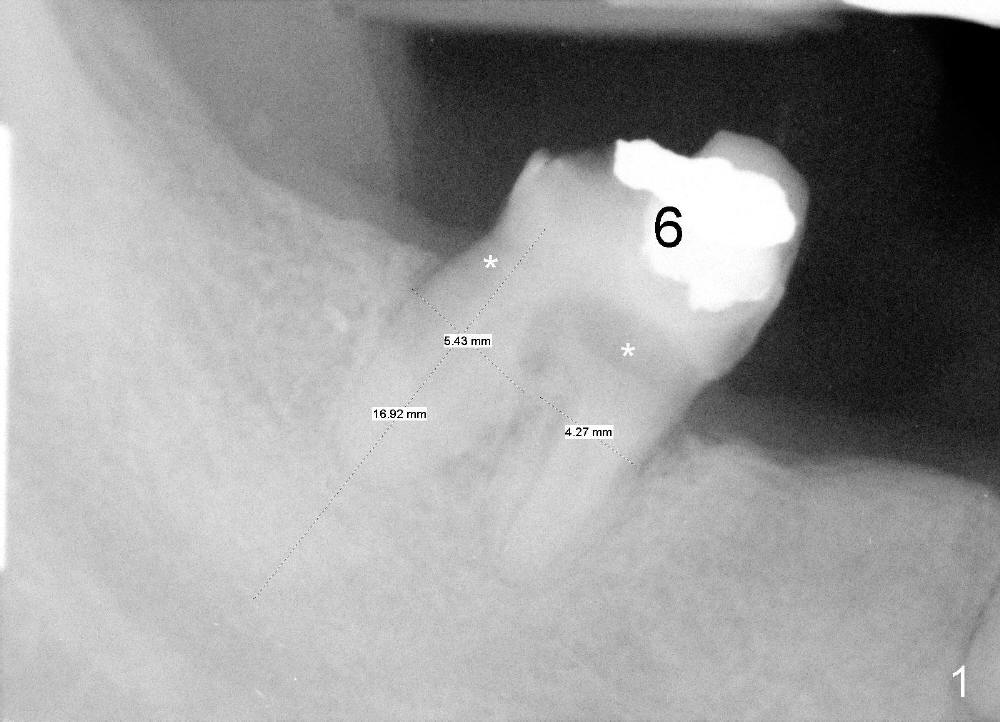
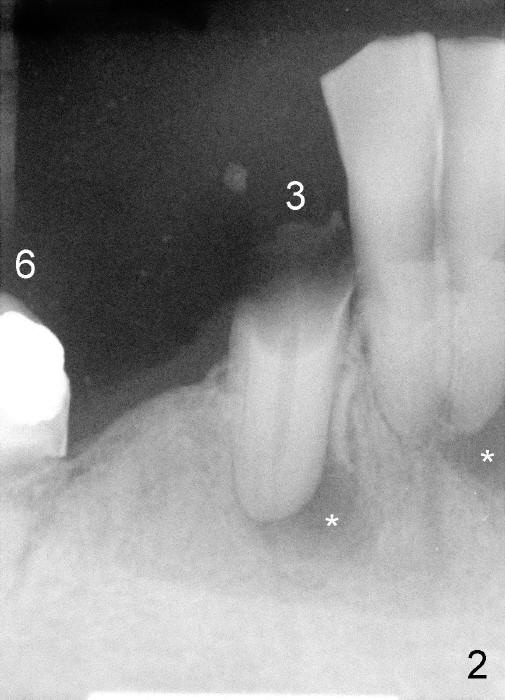
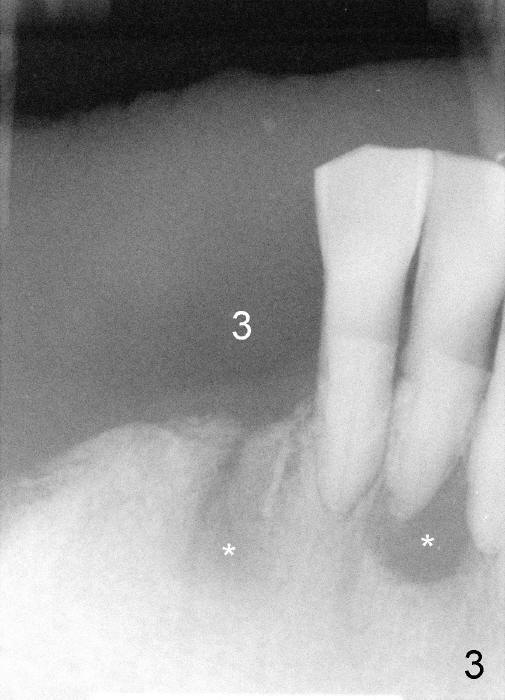
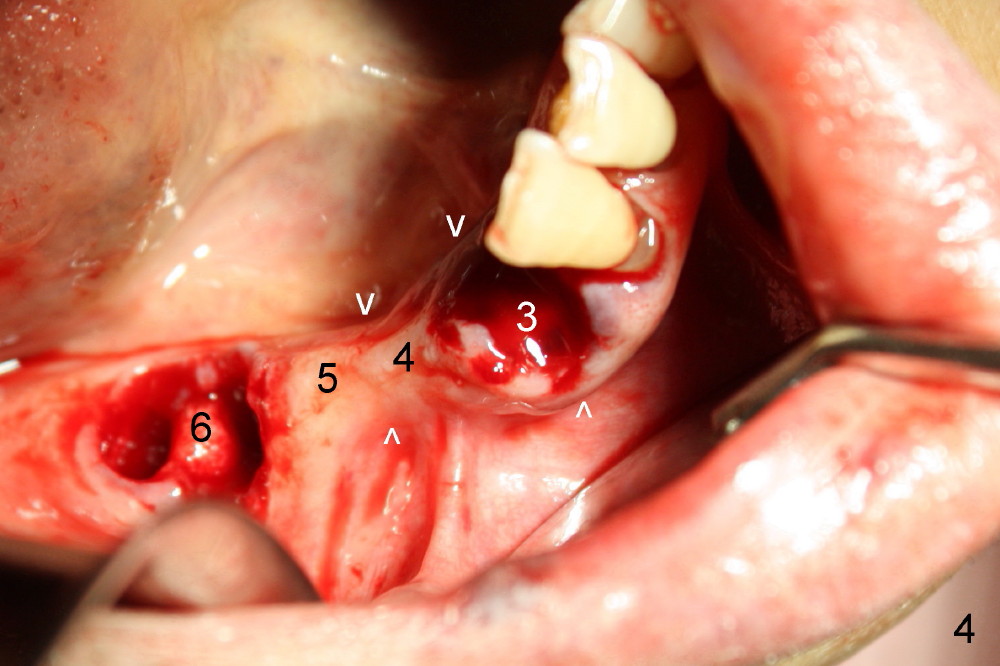
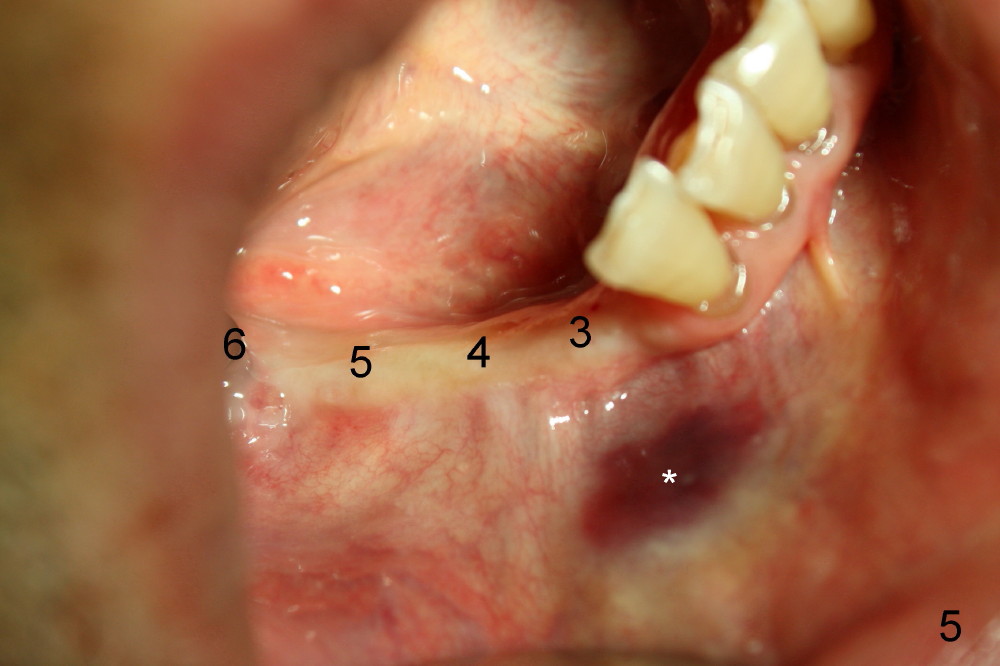
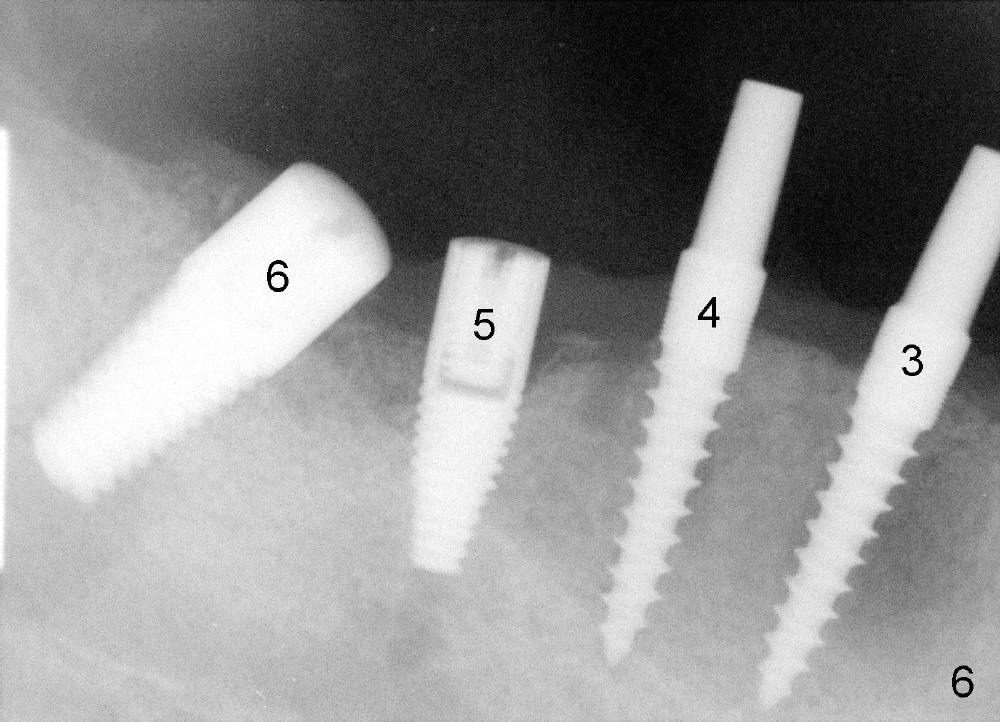
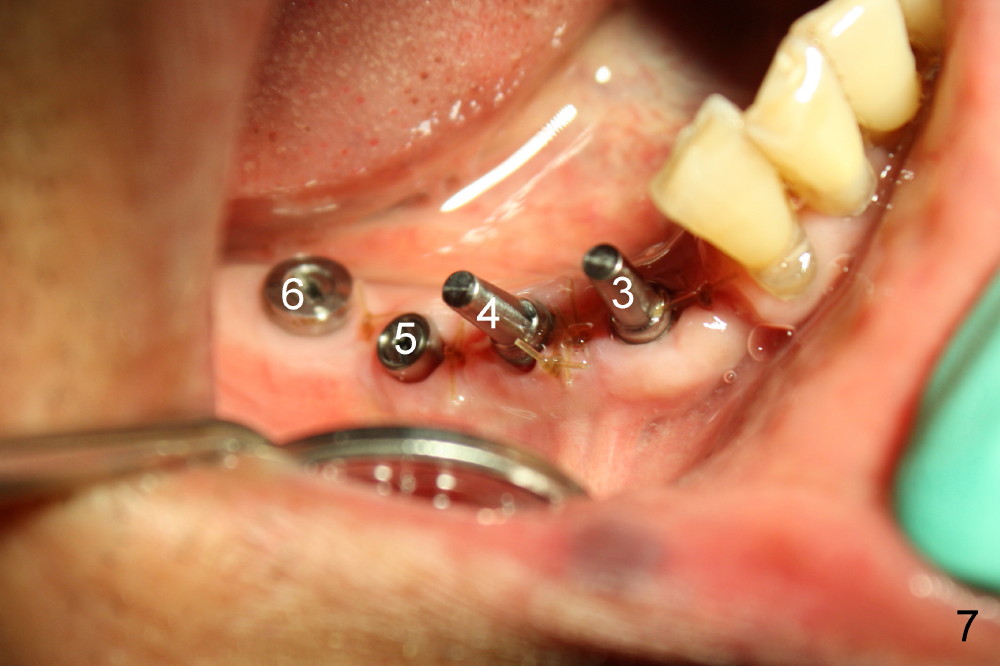
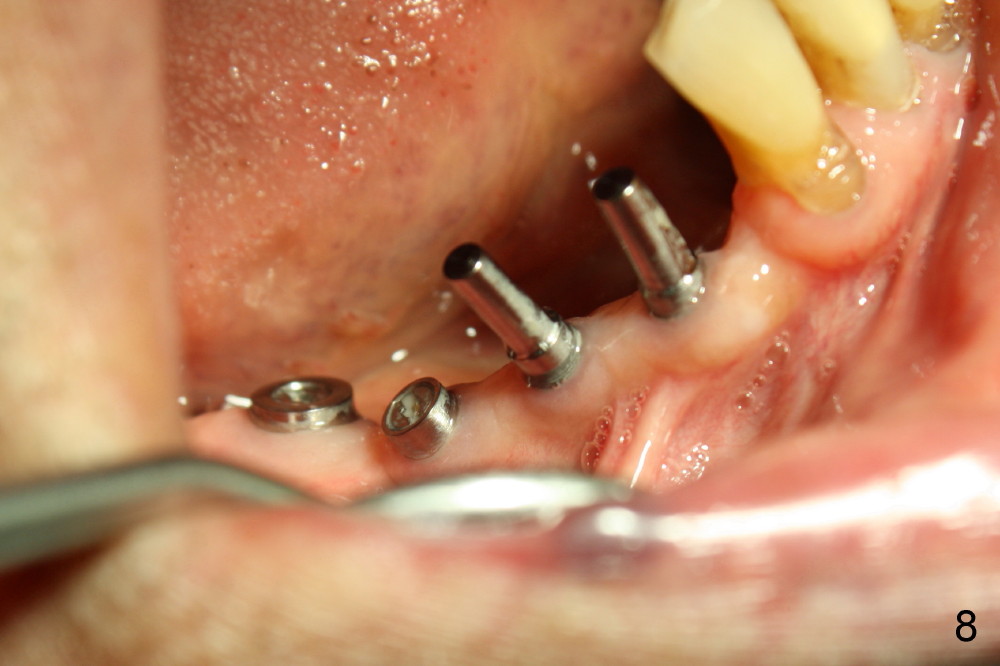
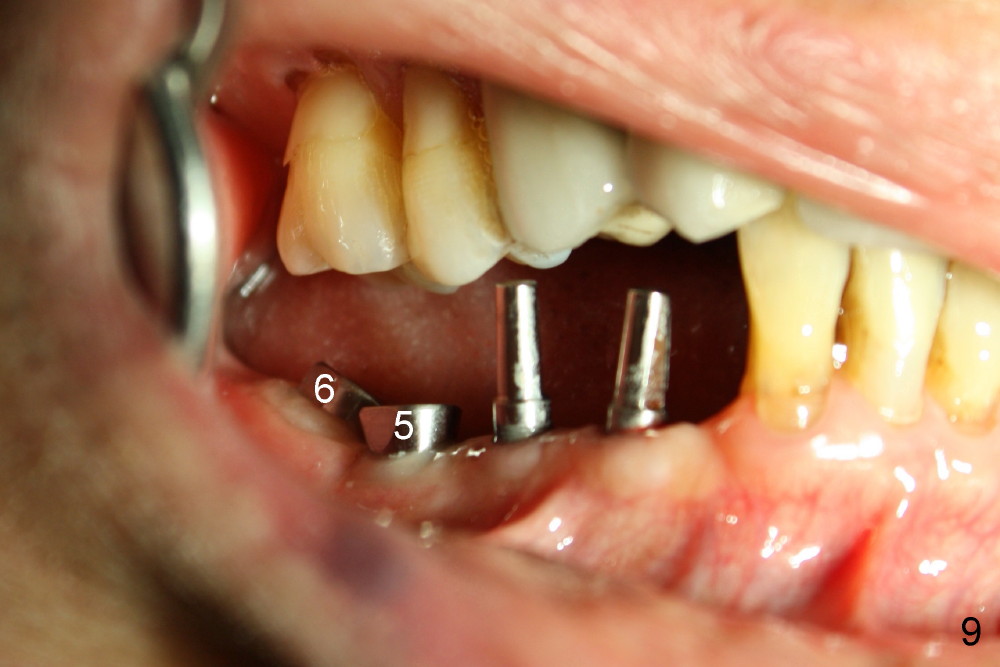
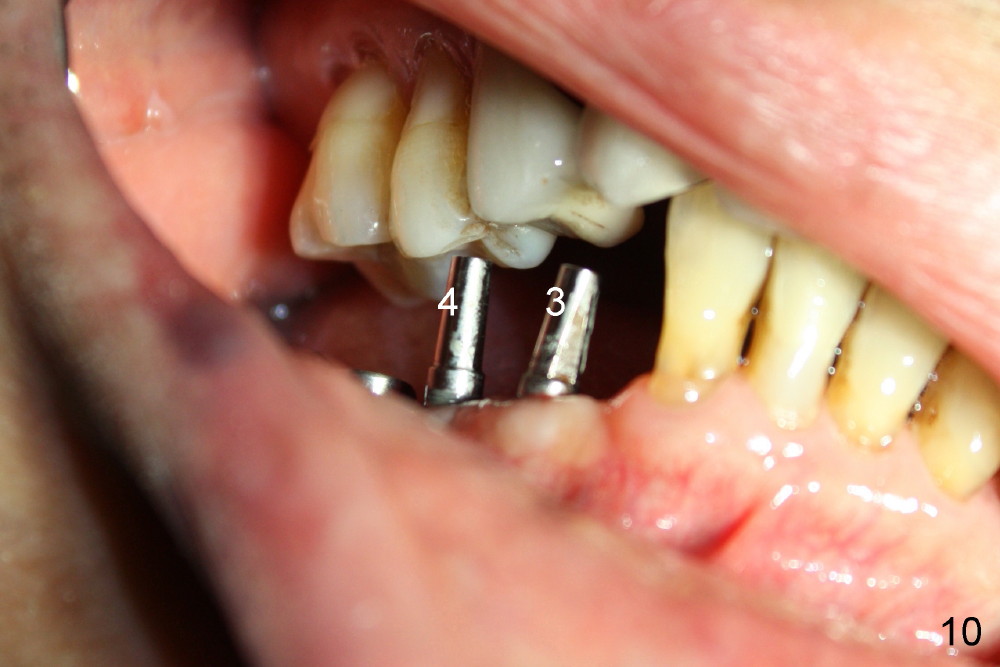
 |
 |
 |
 |
 |
|
 |
 |
|
 |
 |
|
 |
||
Full Mouth Impression for Multiple Unit Implant Restoration
Several months ago, Philip (77 years old) was receiving chemotherapy for bladder cancer. His lower right bridge broke down (Fig.1,2: #3-6: from canine to first molar). The two abutment teeth (#3, 6) are nonsalvageable (Fig.4). Ideally, immediate implant should be placed and implant-supported bridge is to be made. The ridge at the site of #4 and 5 (premolars) is narrow.
Four months later, he returns and asks for implant restoration. The ridge at the site of #3 is quite narrow (Fig.5). While the socket of #3 is radiolucent (Fig.3 * under #3), there is an periapical abscess of the neighboring tooth (separate *). It appears unsafe to place an implant at the site of #3, although anesthetic has been injected (Fig.5 *). Instead an implant is placed at the site of #6 (5x14), further away from the infection.
Two weeks later, two of one piece implants are placed at the site of #3 and 4 (3x17), regular two piece implant at #5 (3.5x11; Fig.6). Fig.7 is taken one week post op.
Four months after implantation, the gingiva around these four implants is healthy (Fig.8). Healing cuffs are placed over the implants #5 and 6 (Fig.9). The trajectory for the one piece implants is within normal limit relative to the opposing dentition (Fig.9,10).
On Oct 14 (Monday afternoon), Philip will return for implant restoration. Full-mouth impression will be taken since there are several missing teeth on the lower right. What should we prepare?
First, prepare all the instruments for #5 and #6 abutment placement, then we take full mouth impression. We will need metal trays for upper and lower arches. Take PVS impression for lower and alginate impression for upper. We also need to take bite registration and choose shade. Jenny
Great. This is exactly what should be done. If the patient were young female, we would have to choose two shades.
Xin Wei, DDS, PhD, MS 1st edition 06/10/2013, last revision 10/06/2013